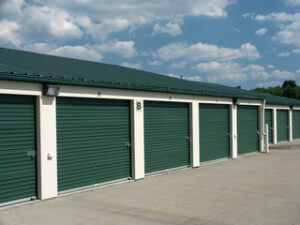A fresh coat of paint can seem like a trivial addition to your home, but it offers both aesthetic and logistical benefits. House painters are experts in both the craft and the science of painting.

They know the best techniques to use for different materials, and they understand how light affects color perception. They also prioritize protecting their clients’ property and ensuring clean workspaces with responsible waste management. Contact Modesto House Painters for professional help.
House painters are masters of their craft, using years of hands-on experience to understand how different paint types and application techniques will interact with each surface. Their understanding of these nuances ensures that the final result meets or exceeds homeowners’ expectations. Whether painting a cozy living space or the exterior of a home, their knowledge and skill set can transform any space.
Throughout the centuries, professional house painting has evolved from a trade to a respected profession. While amateurs can try their hand at it, achieving top-quality results requires a combination of skills, training, and practice. The specialized skills needed for the job include thorough surface preparation, precise application, and modern techniques that produce professional-grade results that surpass DIY enthusiasts’ abilities.
Reputable house painters prioritize their clients’ satisfaction above all else. They communicate with clients clearly, answering any questions and addressing any concerns promptly. They also stick to their agreed-upon timelines and consistently meet or exceed their clients’ expectations. These are not just extra services; they are the cornerstones of their work ethic.
When it comes to painting a room or the entire interior of a home, the first step is determining the best color scheme for the space. House painters can provide expert guidance on choosing the perfect colors for each room, as well as help with the necessary sanding and priming before the actual painting begins. They can also recommend the best paints and materials for each project, ensuring that the finished product is visually stunning.
Professional house painters are also skilled at completing projects in a timely fashion, staying on budget and meeting the deadlines set by their clients. They keep clients updated with progress throughout the project, adjusting plans quickly to address any unforeseen circumstances. They also focus on maximizing efficiency, making sure that the job is done correctly and in a way that minimizes disruption to their clients’ daily lives.
During the final walk-through, house painters are careful to inspect each wall for flaws or inconsistencies. They may even touch up some areas that require extra attention to detail, demonstrating their dedication to quality work.
Transparency
House painting is a vital part of home maintenance and decoration, as well as a form of artistic and cultural expression. However, it can be challenging to distinguish reputable professionals from unethical ones. To avoid a costly project, hire a professional who prioritizes open communication and transparency. Here are some of the qualities to look out for:
Verifying Licensing
Before you hire a house painter, check whether they have a valid license. This will ensure that they have undergone the required training and met the standards set by regulatory bodies. It will also ensure that they are insured against any liability risks.
Asking for References
Inquiring about a painting company’s past projects is one of the best ways to gauge their expertise. This can help you determine their style, professionalism, and quality of work. If possible, visit a few of their previous projects to assess the workmanship in person. Taking the time to do this will make it easier for you to choose a company that can meet your specific needs and budget.
Seeking Transparency
Bait-and-switch tactics thrive in an environment of uncertainty. To protect yourself, seek a transparent house painter who is willing to provide you with a clear breakdown of costs, including labor and materials. Legitimate professionals prioritize open communication and will be happy to answer all your questions. They will also be transparent about addressing repair issues and offer clear justifications for any additional services they suggest.
A professionally painted home enhances curb appeal and increases the resale value of your property. However, a poor job can cost you more than you think. Hiring unqualified painters can lead to costly mistakes that necessitate expensive repairs or rework. Avoid this trap by seeking out a reliable house painter who will provide you with a detailed cost estimate upfront and deliver exceptional results. In addition, ask for references, online reviews, and word-of-mouth recommendations to find a trustworthy painting company.
Responsiveness
Professional house painting is a transformative service that boosts the curb appeal and long-term value of your property. Hiring the right professionals ensures a beautiful finish that will stand up to weather and wear. When you are choosing a contractor, look for a license, insurance coverage, work samples, and effective communication.
Painting is a complex process that requires thorough preparation and precise application. A reliable house painter will explain how they prepare surfaces for painting and the steps that they take to achieve a smooth, even finish. They will also be able to address your concerns and questions about the project. Ask them about their cleanup and waste management procedures as well.
House painters are trained to work efficiently, and they use high-quality rollers, brushes, and sprayers tailored to each surface. This approach allows them to complete projects quickly and provides a superior finished product. They are also aware of the environmental impact that their work has, and they prioritize responsible waste management.
A good house painter will be available to answer your questions throughout the process and will respond promptly to any emails or phone calls you send them. They will also be transparent about pricing and will discuss any changes to the scope of the work with you in advance. A reputable contractor will not hesitate to provide a free estimate and detailed contract before beginning any work.
Reliable house painters prioritize client satisfaction and understand that a satisfied customer is the best marketing tool they have. They will not leave a job until they are certain that the client is happy with the results and will be able to refer them to other clients.
While DIY projects can be fun and rewarding, entrusting the task of painting your home to the professionals is often the wisest choice. By ensuring that the job is done correctly, you can avoid costly repairs and enjoy a beautifully-finished home. By following these tips, you can select a trustworthy and reliable house painter to help your home look its best. If you are not satisfied with the service, politely but firmly express your concerns to the highest-up foreman or manager at the company and seek out a more responsive staff member.
Responsibility
Professional house painters know that their work makes an impact—not just on walls but on people’s lives. This is why they focus on building long-term relationships with their clients by delivering the highest-quality painting services. They prioritize their commitment to adhering to agreed-upon timelines and keeping homeowners informed of the progress of each project. They also work to be transparent about their pricing and make clear why each service they offer costs what it does.
Aside from actual painting, there are a number of tasks that must be completed prior to and after each job. This includes preparing surfaces, washing and sanding surfaces to remove all flaws and prepare for painting, cleaning tools and equipment, and using ventilators to protect themselves from toxic paint fumes. It is also the responsibility of a contracted house painter to interact with clients and assist them with their painting choices. This may involve selecting colors, identifying any underlying issues and working with the client to find solutions that meet their needs.
Choosing the right materials is crucial for efficiency and ensuring high-quality results. Professionals use top-quality paints and tools that are specifically tailored to the project, allowing them to exceed client expectations. They are also aware of the environmental implications of their work and strive to keep their processes as environmentally friendly as possible.
House painters are trained in safety protocols and adhere to strict standards of professionalism. This ensures the safety of their clients, themselves, and anyone else who may come in contact with the work they are doing. They also follow proper disposal practices and make sure to maintain par stock levels of standard paints, brushes, wallpapers, stains and other supplies.
House Painters are a valuable asset to any home improvement or renovation project. They have the expertise and knowledge to deliver quality results that will enhance your home’s aesthetic, increase its value, and protect it from damage. To learn more about how a professional can help with your next project, contact a local house painter today. They can answer any questions you have and provide a quote for your project.








